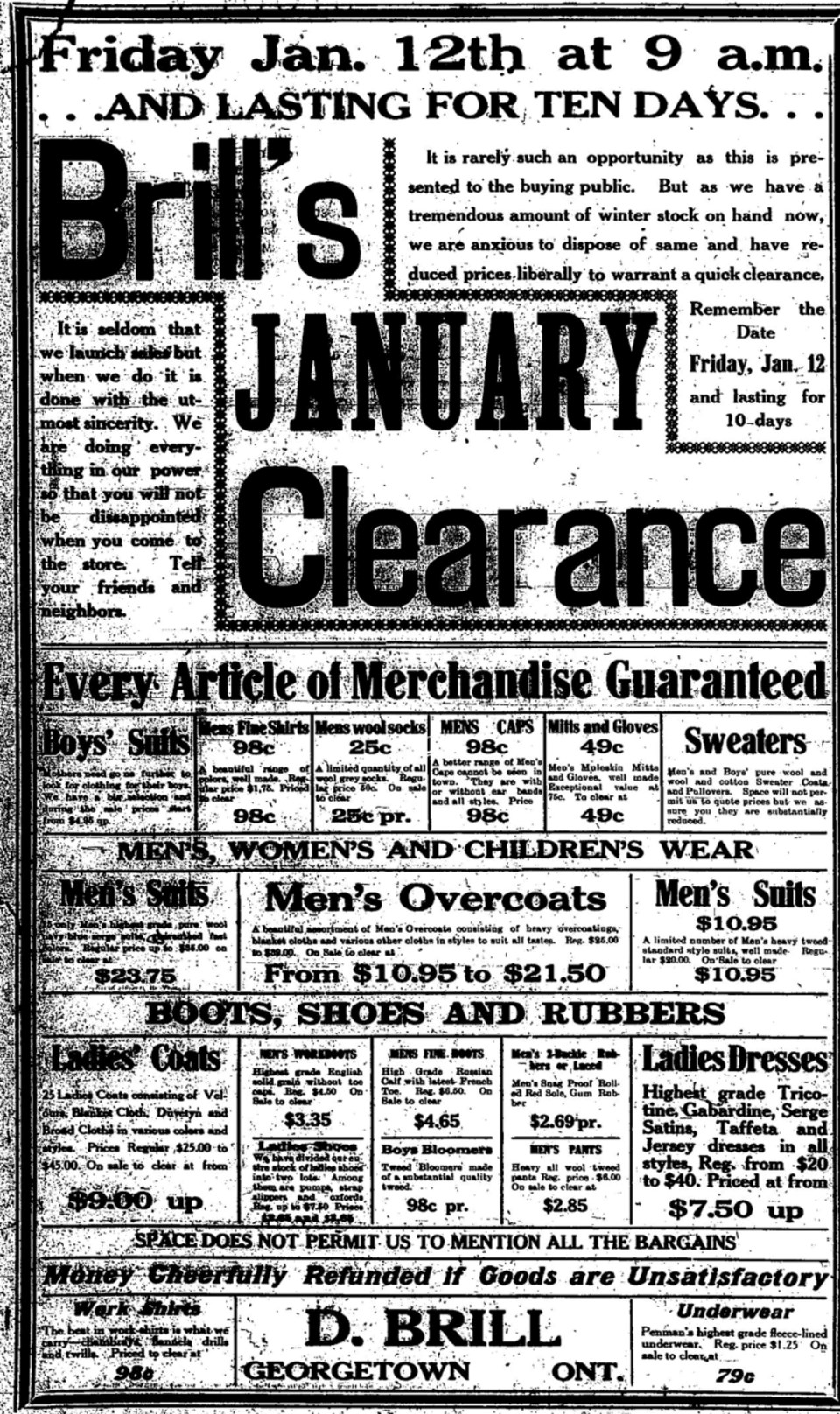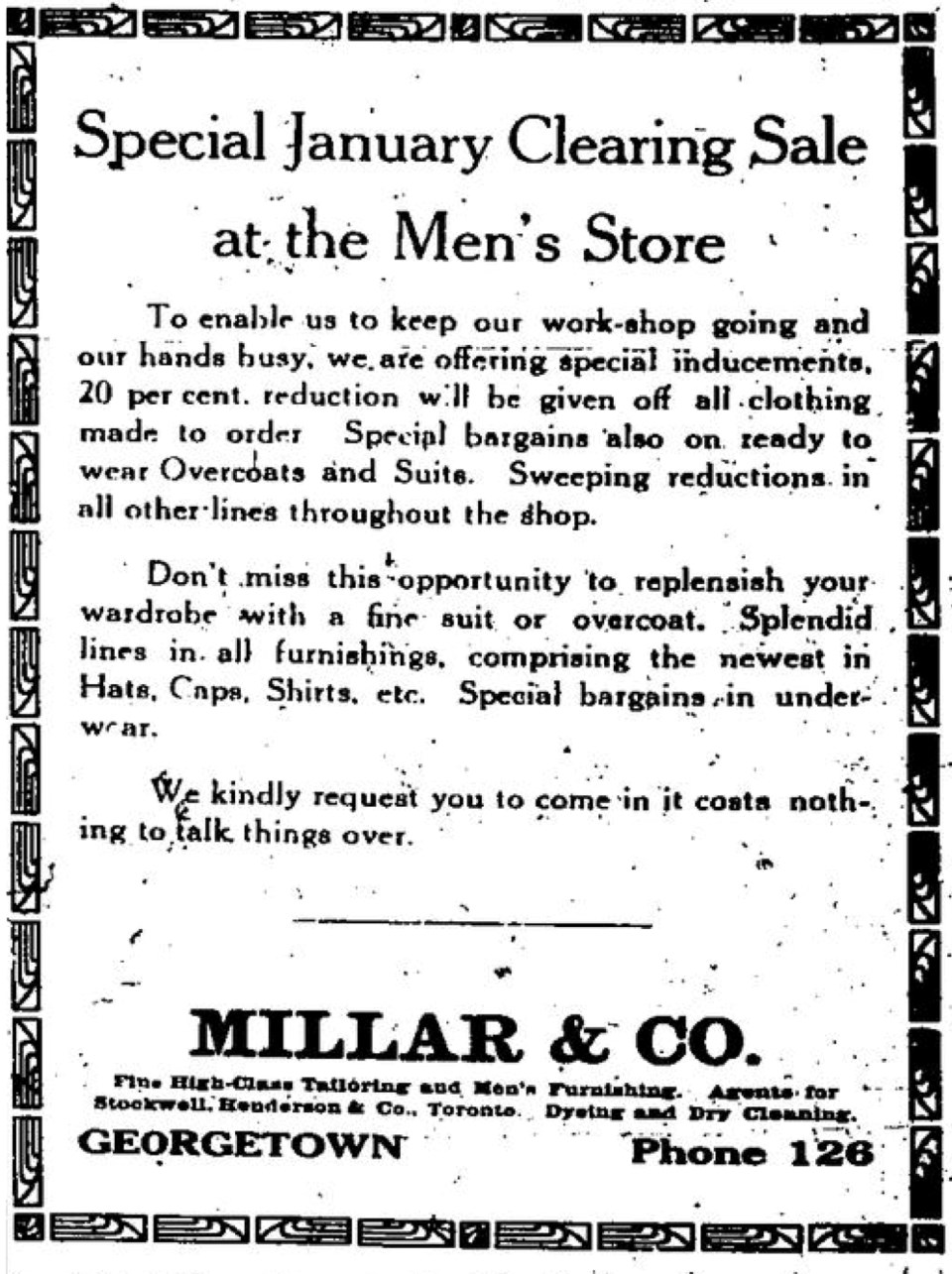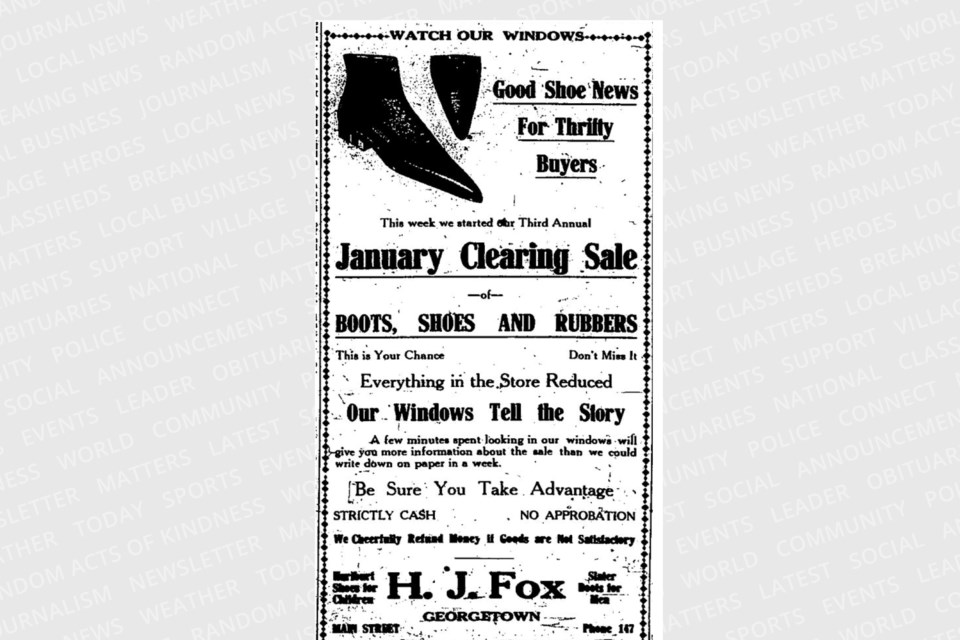The retail scene in January following the Christmas rush has always been a slow time for sales, and the situation was no different a century ago for merchants in Georgetown.
Back issues of the Georgetown Herald from January 1923 provide a good example of the many tactics that merchants would use to get them through the slow period and in turn, produce profits.
When scanning through copies of the Herald, one can see the most used sales trick in the book - offering massive discounts for potential customers to get them into the store and make purchases.
Along with hopes of making extra profits, store owners would also use large discounts to move old stock and make room for new items to sell for the next retail season. Within the advertisements placed in the paper, keywords such as “major clearance,” “limited time” and “huge savings” were used to help further entice customers.

One business offering the largest sale was Brill’s clothing store, advertising a “January clearance” on most merchandise, with the sale running for 10 days starting on Jan. 12. Prices for the sale at Brill’s ranged from 25 cents to $1 for items like socks and under garments, with high-quality coats going for about $10. That price range would be about $4 to $165, in today’s currency.
It should be noted that the economy was doing well during the ‘Roaring ‘20s’, with most people willing to spend a little extra on goods and merchandise, compared to times during the First World War and the era to follow the ‘20s, the Great Depression of the 1930s.
Another Georgetown store to get in on the sales action was H.J. Fox’s footwear store, proclaiming to offer major bargains on a wide selection of boots, slippers and shoes, telling customers to shop at the store in order to save money.
Interestingly, it was not just shoe and clothing merchants to offer sales, but also grocers such as Grandy’s and Rennie’s. Grandy’s was advertising savings in canned goods and produce, such as 25 cents for 3 pounds of peas, and Rennie’s was selling various goods, such as 5 pounds of honey for 75 cents.
It has been said that grocers would take part in January sales to help ease the burden on the price of food for customers that may have splurged a bit too much on Christmas gifts in the previous month. As the month moved along, more local merchants would announce major sales in the Herald, which included Jackson’s store, advertising a two-day sale that saw “strictly high-grade merchandise at the sensational price of 10 cents” - a sale that would surely get customers to purchase new plates, bowls and other China at great discounts.

Even Millar & Co, a men’s clothing and tailor shop, offered discounts as a way to drum up business and to keep its employees busy during this slow time.
By the time the end of the month rolled around, merchants were pretty much done with the lull of January and had switched their focus onto the Valentine’s Day market of February.
While the advertising is from 100 years ago, it’s still interesting to look back at old newspaper advertisements and see what tactics were used then and to even compare what sales methods are implemented to this very day as merchants continue to trudge through the post-Christmas market of January.
Article written by Scott Brooks, with information from the Georgetown Herald/Halton Hills Public Library Newspaper Archives.



